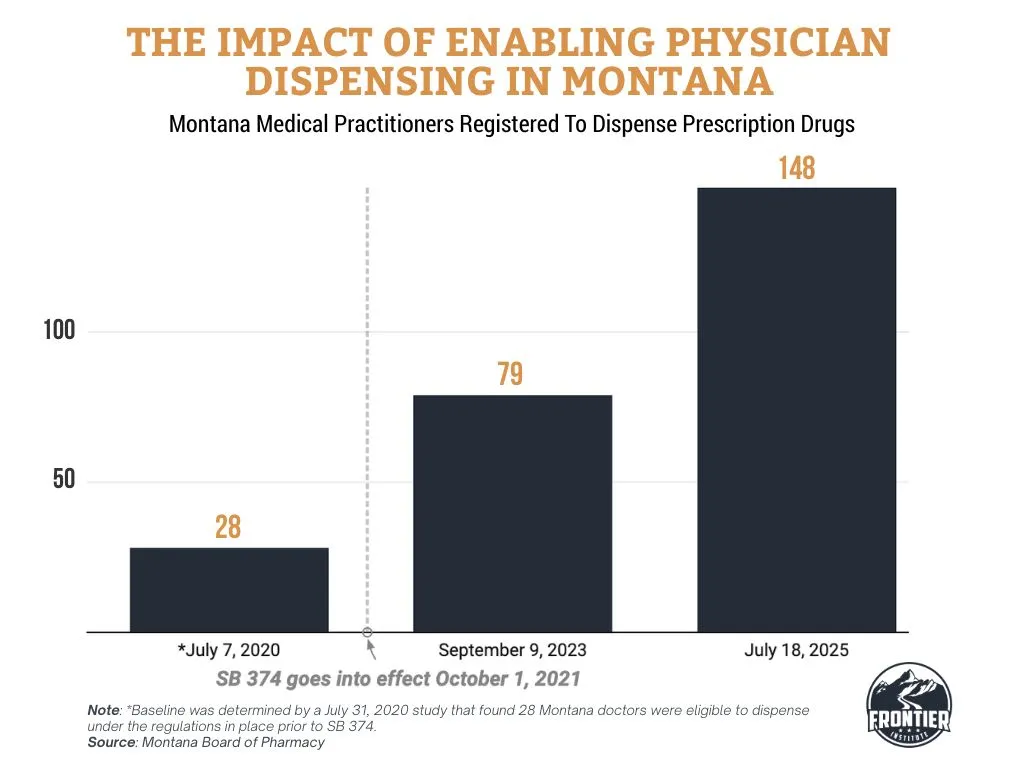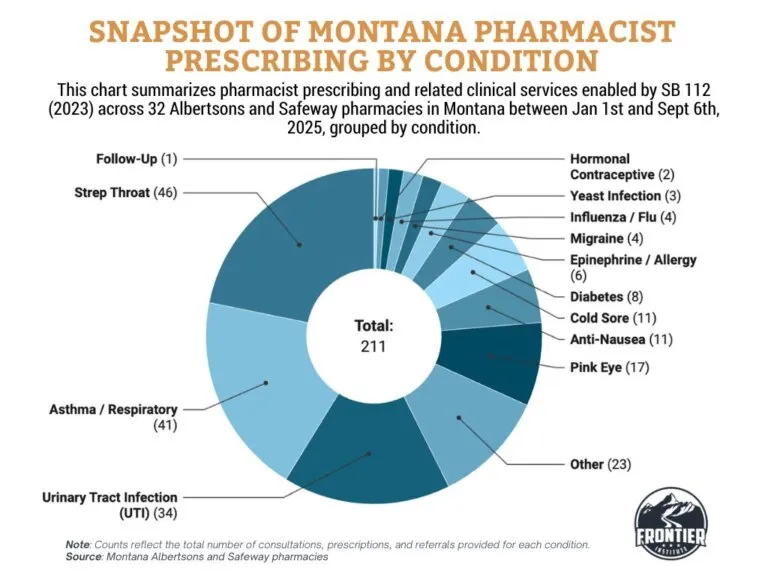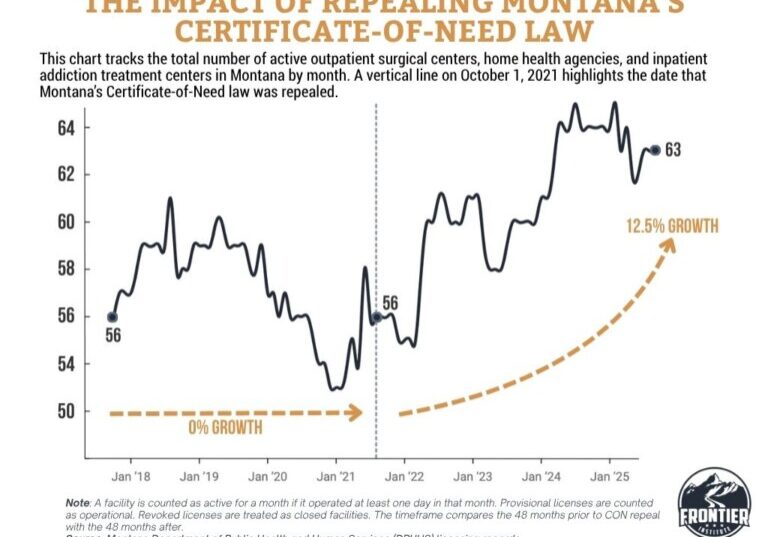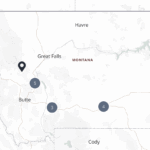Montana Breaks Healthcare Monopolies, Expands Patient Access
Pharmacists now prescribe routine medications while new facilities bypass competitor vetoes
By Staff Writer
Oct 9, 2025
HELENA — A new report from the Frontier Institute documents significant gains in healthcare access across Montana following three key deregulation measures championed by the conservative think tank during the 2021 and 2023 legislative sessions.
The organization’s “Freedom in Practice: 2025 Healthcare Reform Impact Report”, released this week, presents data showing a 12.5% surge in healthcare businesses since the repeal of certificate-of-need laws, along with expanded access to medications and routine care through pharmacy and physician reforms.
“Reducing the red tape and burdensome regulations imposed on the healthcare system has proven to be an effective way to expand healthcare access in Montana without the need for spending taxpayer money,” the Frontier Institute stated in its report.
Certificate-of-Need Repeal Shows Measurable Impact
The most dramatic change followed the 2021 passage of House Bill 231, which repealed Montana’s “certificate of need” regulations. These laws required healthcare providers to prove to the state that new or expanded services were “needed” before receiving government permission to operate. Competitors could even object during the approval process, effectively giving existing businesses power to block new entrants.
According to data from the Montana Department of Public Health and Human Services, the number of businesses providing home health, outpatient surgery, and inpatient drug rehabilitation services jumped from 56 to 63 facilities in the 48 months after the October 2021 repeal — a sharp contrast to zero growth in the previous four years.

The reforms also enabled substantial geographic expansion. DPHHS officials confirmed that home health companies expanded service to at least 18 additional counties following the repeal, coverage that previously would have required lengthy government approval processes.
“Montana’s CON laws were stifling competition, limiting access, and driving up costs,” the Frontier Institute noted, citing research that influenced their successful push for repeal after Gov. Steve Bullock vetoed a similar effort in 2019.
National experts called Montana’s certificate-of-need reforms “the most significant in any state in recent years,” according to the report.
Physician Dispensing Authority Expands Access
A second major victory came through Senate Bill 374, which legalized in-office medication dispensing by medical practitioners — making Montana one of the first states to broadly allow physicians, physician assistants, and nurse practitioners to dispense non-opioid medications directly to patients.
The results exceeded expectations. From just 28 physicians qualified under the old restrictive system, 148 practitioners have now registered with the Montana Board of Pharmacy to dispense medications directly since the October 2021 implementation.

“Many are offering to dispense in-office medications at or near wholesale prices, which can be a substantial cost savings for patients,” according to the report.
The Wall Street Journal’s editorial board praised the passage of SB 374 as “a victory for competition and common sense.”
Price comparisons show some Montana clinics now offer medications at less than half the retail pharmacy price — potentially even below typical insurance co-pays for patients.
Pharmacists Treating Routine Conditions
The third reform, Senate Bill 112 passed in 2023, authorized Montana pharmacists to independently prescribe routine medications for common, low-risk conditions — an authority available in only a handful of states.
While comprehensive state data isn’t available due to no registration requirement, Albertsons and Safeway report that 72 pharmacists across their 32 Montana locations have used the new authority to treat over 200 types of conditions between January and September 2025.
The pharmacy chains documented 211 total consultations, with strep throat (46 cases), asthma and respiratory issues (41 cases), and urinary tract infections (34 cases) leading the list of conditions treated.

“The reform is improving access to routine care, especially in communities where pharmacists are the most local point of contact,” the Frontier Institute stated.
Other pharmacy chains, including Walmart, have announced pilot programs to adopt the expanded prescribing authority.
Model for Healthcare Reform
The Frontier Institute positioned these reforms as a counter-narrative to traditional government spending approaches to healthcare shortages, particularly significant in Montana where the entire state is designated as “medically underserved” by federal authorities.
Some rural counties still lack a local primary care physician, making the expanded access through deregulation particularly valuable for remote communities.
“This approach should serve as a model for future reforms,” the organization concluded, suggesting Montana’s experience demonstrates how reducing regulatory barriers can expand healthcare access without taxpayer investment.
The report represents vindication for the Frontier Institute’s advocacy strategy of identifying specific regulatory obstacles and working with legislators to craft targeted solutions rather than broad healthcare spending programs.
All three bills were signed into law by Gov. Greg Gianforte, who has made reducing regulatory burdens a cornerstone of his administration’s policy agenda.
Categories: Business, Government, Health
Don’t miss the week’s top Montana stories
Join readers across Montana who rely on WMN for independent reporting.
Unsubscribe anytime. Want to support WMN? Upgrade for $4/month →





